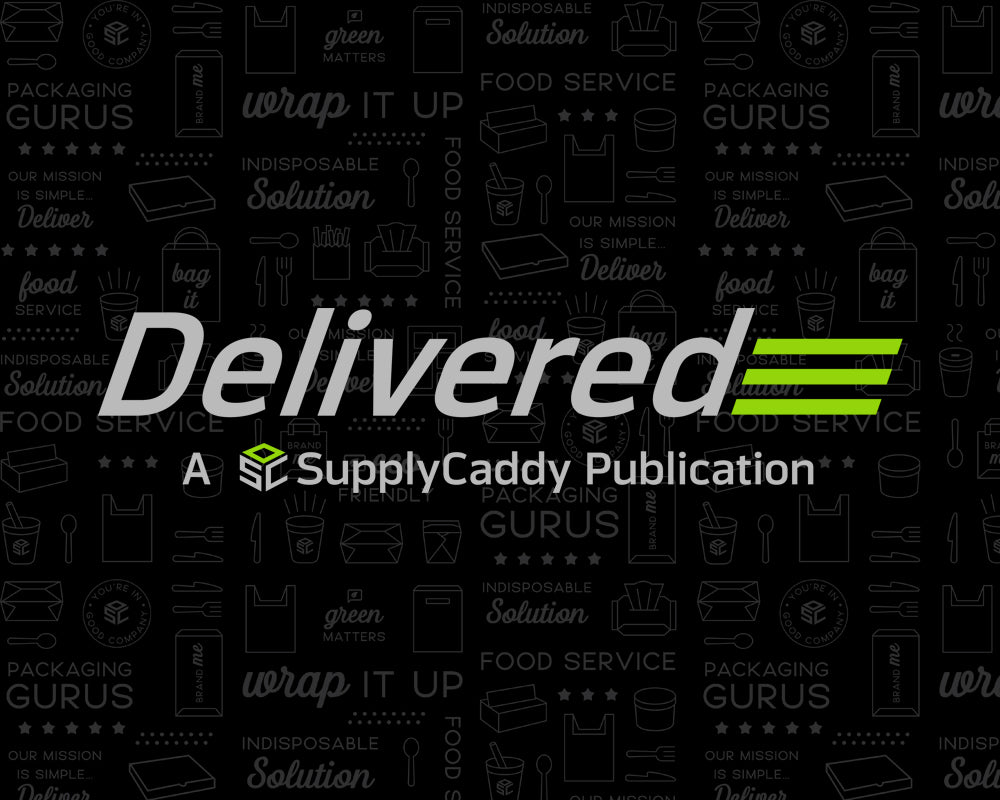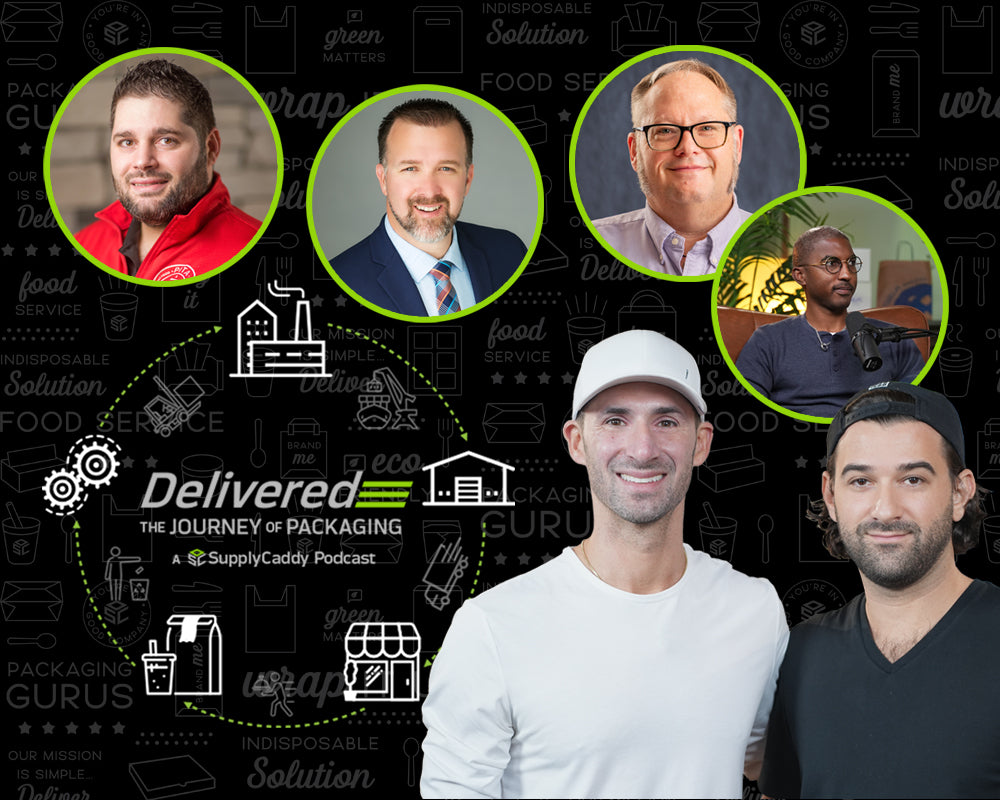You have probably heard about GLP-1 drugs for weight loss. They are all over social media and often in the news for helping people lose weight and improve their health. What many people do not realize is that these drugs are not only changing personal health but are also having a big effect on the restaurant industry.
This is not just another diet trend. It is a medical change in how people feel hunger, fullness, and satisfaction with food. That change reaches far beyond the doctor’s office. It comes into restaurants, affects menus, changes how much people order, and even influences the type of packaging restaurants need to use.
We’ve spoken with industry experts, and one of the most compelling conversations we’ve had was with Jonathan Maze, Editor-in-Chief of Restaurant Business Magazine, who summed it up perfectly: “GLP-1s won’t kill restaurants, but they’ll change how people eat.” And he’s right. The challenge is not whether you can survive the change, it’s whether you can adapt fast enough to thrive in it.
In this blog post, we will explore how GLP-1 drugs for weight loss, such as Ozempic and Wegovy, are influencing customer dining behaviors, reducing portion sizes, and changing menu preferences.
What are GLP-1 Drugs for Weight Loss and Their Implications For Eating Behavior
GLP-1 stands for glucagon-like peptide-1, a hormone your body naturally produces. It’s one of the body’s internal regulators of appetite and blood sugar. When it’s active, it signals to your brain that you are full, slows digestion, and helps keep blood sugar levels stable. Pharmaceutical versions of GLP-1 mimic this hormone’s action. They’re prescribed to help with blood sugar control in type 2 diabetes and, increasingly, to aid in weight loss.
When someone starts using GLP-1 drugs for weight loss, their appetite often changes dramatically. They may find themselves eating far less than they used to. Meals that once felt just right now feel too big. Favorite snacks may lose their appeal. Even cravings can shift, leading people to seek lighter, more nutrient-dense meals instead of calorie-heavy comfort foods.
In practical terms, this means that a guest who once ordered a full appetizer, large entree, and dessert may now feel full halfway through the main course. The impact of that single choice ripples through your kitchen output, your average ticket size, your table turnover rate, and your packaging needs for leftovers and takeout. It’s not just that customers are eating less; it’s that their entire relationship with food is being rewired, and restaurants have to decide how to respond to that shift.
The implications go deeper than portion size. Because these drugs change how people respond to hunger cues, dining out becomes more about taste, texture, and quality rather than quantity. This creates a unique challenge for chefs and operators who have long relied on significant portions to signal value. Now, value has to be measured differently through flavor innovation, presentation, and the overall dining experience.
How GLP-1s Will Change Dining Habits, According to Jonathan Maze, Editor-in-Chief of Restaurant Business Magazine
Jonathan Maze has spent nearly two decades covering the restaurant industry. He has seen it through recessions, health trends, and changing consumer expectations. When we sat down with him on our podcast, Delivered, he offered an unflinching assessment: GLP-1s will alter how people eat, but they don’t have to mean disaster for restaurants.
He pointed out that smaller appetites will naturally lead to smaller orders, which will require adjustments in how menus are built, how meals are packaged, and how restaurants think about value. He also emphasized that this change doesn’t have to be negative; it can push the industry toward better alignment with evolving customer needs. For example, restaurants can start introducing more customizable portion sizes, offering high-quality small plates, and focusing on presentation and freshness in ways that enhance perceived value even if the quantity is lower.
Jonathan also stressed the importance of packaging. If diners are ordering less or taking home smaller portions, oversized packaging will look wasteful and feel out of sync with the meal. Right-sizing containers not only reduces waste but also sends a subtle message that the restaurant understands and respects the customer’s needs. This kind of attention to detail builds trust and loyalty.
He also linked this appetite shift to broader changes already underway. Delivery trends, driven by convenience and digital ordering, are forcing restaurants to rethink their physical footprints. Smaller in-store dining areas, larger production kitchens, and menu items designed specifically for travel are becoming more common. The rise of GLP-1 drugs will likely accelerate this move, as delivery orders for lighter meals increase.
How Weight-Loss Drugs Will Impact Restaurants
-
Smaller Portion Demand
One of the most immediate changes is portion size. People on GLP-1 drugs simply don’t need as much food to feel satisfied. This means that the generous plate of pasta that used to be a selling point may now be more than your customer wants. Restaurants will need to rethink serving sizes to match new appetites without making diners feel like they’re getting less value for their money. That could mean offering smaller entrees at a slightly lower price point or designing menus that allow guests to order multiple small dishes instead of one large one.
-
Menu Redesign for Appetite-Conscious Diners
Menus will have to evolve beyond just cutting portions. Appetite-conscious dining is about creating satisfying meals that deliver on flavor, texture, and presentation without overwhelming the customer. This is where creativity matters. Imagine a menu section dedicated to “lighter indulgences,” where each dish is crafted for smaller appetites but still offers a memorable experience. Ingredients with bold flavors and contrasting textures can create a sense of satisfaction even in smaller amounts.
-
Packaging Innovations
Portion size changes naturally influence packaging. If meals are smaller, the containers holding them should be smaller too. Large, half-empty boxes not only look unappealing but also send the wrong message. Compact, well-fitted packaging helps preserve food quality, reduces waste, and aligns with sustainability goals. SupplyCaddy is already working with restaurants to develop portion-perfect packaging solutions that look as good as they function, ensuring that the presentation remains strong from kitchen to customer.
-
Changes in Revenue Models
Smaller portions could mean a smaller check average, but it doesn’t have to hurt profits if restaurants adapt creatively. Offering tasting menus, seasonal small plate specials, or bundled meal options can encourage customers to try more dishes in a single visit, boosting overall spend while still aligning with their appetite. Subscription-based meal kits, curated for lighter appetites, could also become a viable revenue stream, especially for restaurants with strong brand loyalty.
-
Impact on Buffet and All-You-Can-Eat Models
The most affected segment will be buffets and all-you-can-eat concepts. These models rely on customers spending more than the average meal cost to be profitable. With GLP-1 users eating less, buffets may need to rethink their pricing, portion control, and value proposition. This could mean introducing premium stations, rotating specialty items, or offering tiered pricing based on plate size or number of visits to the buffet line.
Partner with SupplyCaddy for Portion-Perfect Food Packaging Solutions
Change is inevitable, but the way you respond determines your success. Adapting to smaller portions requires more than just adjusting recipes; it demands packaging that fits the new reality. SupplyCaddy has already delivered over one billion products to the food service industry, and we understand the urgency of adapting quickly without sacrificing quality.
We provide portion-perfect packaging solutions to help restaurants maintain presentation, reduce costs, and align with evolving consumer expectations. Smaller containers keep food fresher, travel better for delivery, and support sustainability by minimizing waste. If you’re ready to adapt your packaging to match the new portion reality, reach out to SupplyCaddy at hello@supplycaddy.com.


